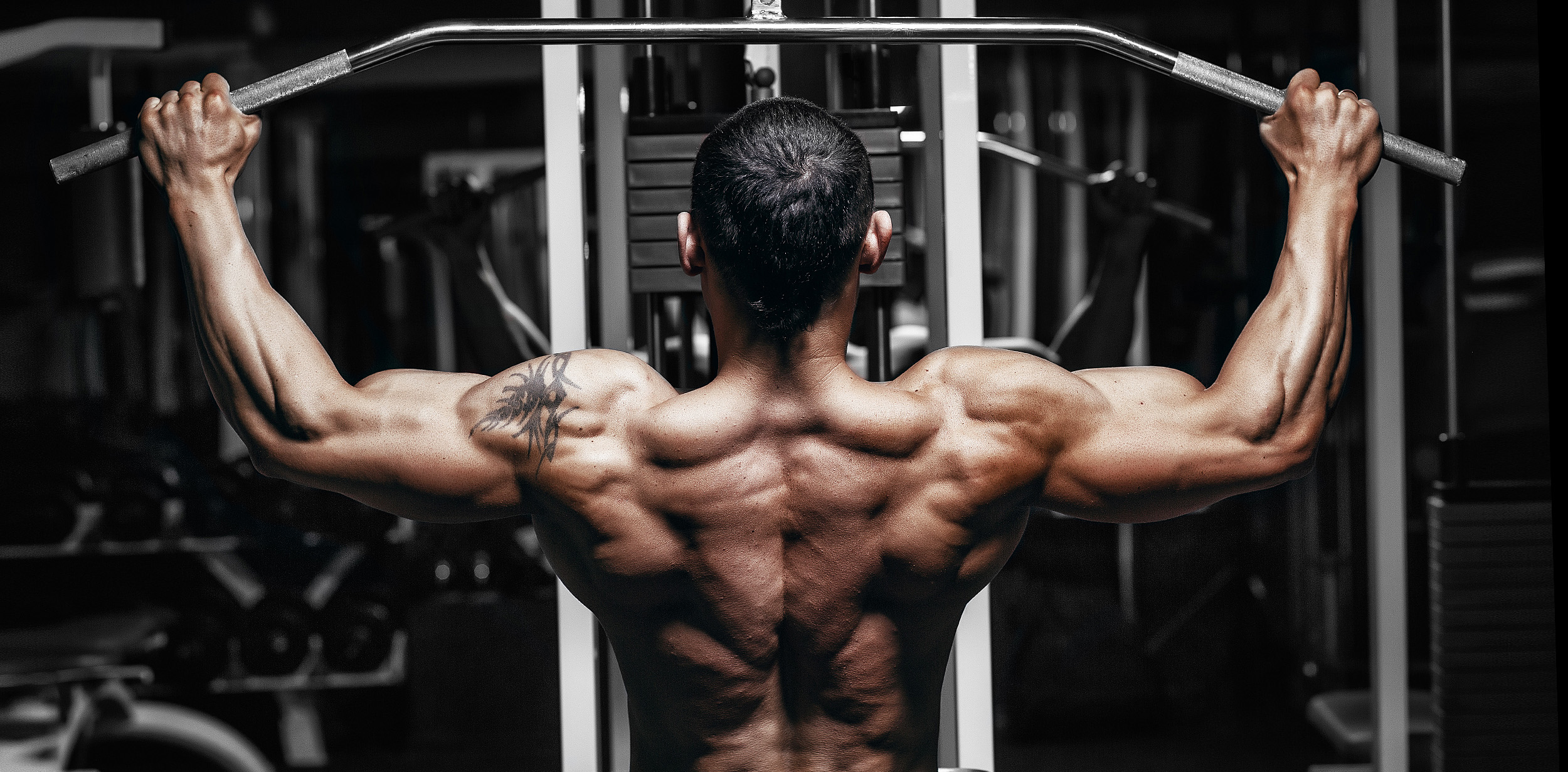Use This Technique to Crush Your Back, Lats, and Grip
Dr. Joel Seedman, Ph.D.
That lats and upper back can be difficult to target for many lifters as they often have a difficult time recruiting these muscles properly. Although there are a number of unique methods that can help improve lat activation and enhance the muscle mind connection in the upper back, one technique that I’ve found particularly useful is the rotational strap method. Simply attach two standard wrist wraps/straps to a barbell spaced approximately shoulder width apart and use these for your handles while producing a rotational movement.
This technique can be applied to a number of row and lat pulldown variations. Although these aren’t exercises you’ll load up with incredibly heavy weights there are several unique benefits this method provides not only for improving shoulder health and mechanics but also for stimulating functional strength and size in the upper torso. Here’s why
1. This specific set up allows a very natural rotational pulling motion to occur rather than the overly rigid grip you would typically find with a standard setup. In essence you’ll be using a fully pronated grip in the stretched position and gradually rotating to a fully supinated grip as you reach the fully contracted position. Besides being very conducive for reinforcing proper and smooth scapulohumeral rhythm and centrated glenohumeral joint mechanics (locked in shoulder joint), the rotational movement is also very effective for stimulating significant lat activation and growth
The reason for this is that the overhand or pronated position allows a greater lat stretch while the underhand or supinated position produces a more forceful contraction in the lats at the end of the concentric pull. This produces both mechanical tension and muscle damage (to a moderate degree) as well as a degree of metabolic stress and local occlusion. As a result the stimulation and muscle mind connection you’ll receive to the lat muscles will be significant to say the least even though the load will be relatively light. However, for those suffering with joint issues and overuse injuries, having access to a lat exercise that allows you to use lighter therapeutic loads while simultaneously crushing the lats is always a welcome bonus.
2. The straps create a more unstable and vulnerable attachment. Because you’ll be gripping the hanging straps several inches or more away from the anchor point on the bar, this causes the bar to be more susceptible to tilting, swaying, shifting or rotating. If you begin to pull more from one arm, allow one shoulder to deviate (i.e. excessive protraction or elevation), or you use excessive momentum, these will all be magnified as you’ll begin to lose control of the bar. In essence you’ll be forced to use smooth, crisp, symmetrical, and precise pulling mechanics to keep these locked in.
3. This rotating strap variation absolutely crushes the grip as you’ll have to pinch the daylights out of the wrist straps to keep the handles from slipping out of your hands. If you’re in need of a lat pulldown variation that crushes your hands, grip, and forearms, this one’s tough to beat. Ironically this increased grip activation does not take away from upper back recruitment but instead enhances it through improved shoulder stability (a common byproduct of increased grip activation through concurrent activation potentiation). You can also use towels or bands to crush the grip even further but unfortunately it can take away slightly form the rotational movement.
If you feel like grip strength is more of a limiting factor than your back during these variations, try pre-exhausting your lats immediately prior to the pulldown by performing some form of pullover with kettlebells, dumbbells, or barbells. You can also use straight-arm pulldowns on a cable system for increased tension in the contracted position. Regardless of what variation you choose not only will this pre-exhaustion technique improve your muscle-mind connection in your upper back but the lats will most likely fatigue well before your grip does on the row or pulldown exercise.
The Ultimate Challenge!!!
Here I'm combining two of my favorite protocols into one unique exercise using the eccentric isometric single leg RDL in conjunction with the rotational strap method. Also notice the use of the thick mat under my foot to increase the instability and facilitate greater foot and ankle activation as well as overall proprioception. Just be prepared to focus your mind like a Jedi master in order to successfully complete these.
Lastly, pay close attention to the single leg hip hinge position. It involves a 90 degree bend in the back leg with ankle dorsiflexion as well as ample knee bend in the support leg all of which represent proper single leg hip hinge mechanics. Read more about Single Leg RDL and Hip Hinge Mechanics Here.



















